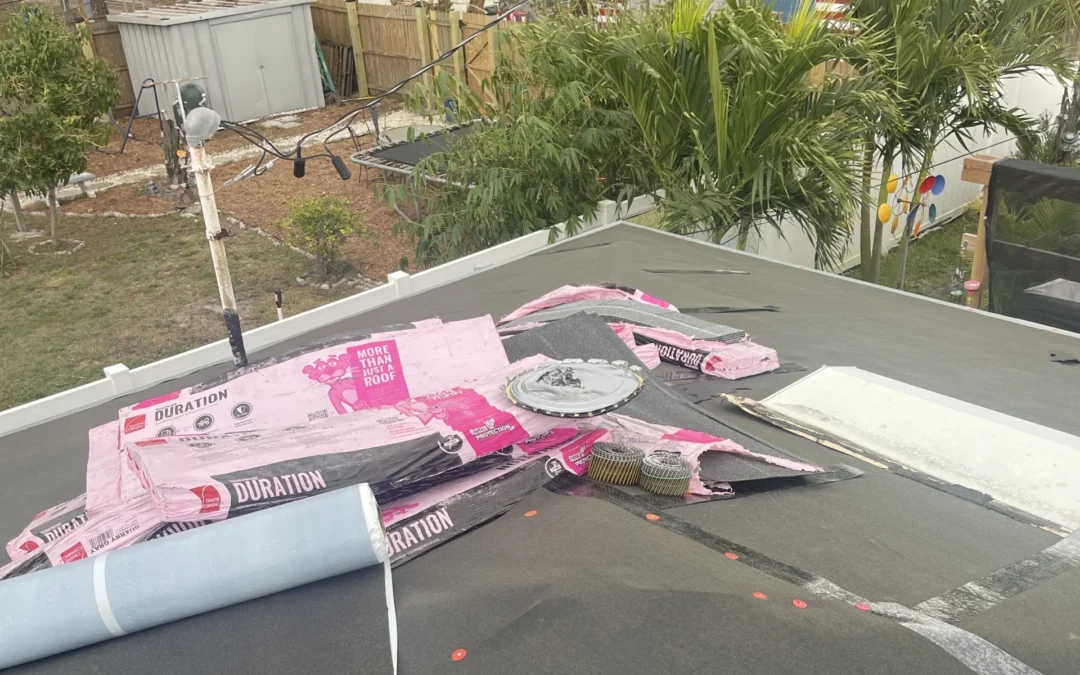Deciding between a roof repair and a full roof replacement can be tricky. Homeowners often wonder whether fixing small issues will be enough or if it’s time to invest in new roof installations. Making the right choice can save you money, protect your home, and prevent future headaches. This guide will walk you through the factors to consider and help you make an informed decision.
Understanding Roof Repair
Roof repair focuses on fixing specific issues without replacing the entire roof. Common repairs include:
- Fixing leaks caused by damaged shingles or flashing
- Replacing broken or missing tiles
- Repairing minor storm or hail damage
A roof repair is ideal if the damage is localized and your roof is relatively young. Quick fixes can extend the life of your roof and prevent further damage. However, repeated repairs may signal that it’s time for new roof installations instead.
When Roof Replacement Makes Sense
Sometimes repairs aren’t enough, and a full roof replacement is the smarter option. Consider replacement if:
- Your roof is over 20 years old
- There are widespread leaks or structural damage
- Multiple areas require frequent repairs
- Your roofing material is outdated or deteriorating
A roof replacement not only ensures your home is fully protected but can also increase property value and improve energy efficiency. Investing in new roof installations now can prevent costly emergency repairs later.
Key Factors to Consider
Age of Your Roof
The lifespan of roofing materials varies. Asphalt shingles typically last 20–25 years, while metal roofs can last 40–50 years. If your roof is approaching the end of its lifespan, repairs may be a temporary fix, making a replacement a better long-term solution.
Extent of Damage
Minor damage like a few missing shingles can often be repaired. Extensive issues such as sagging areas, rot, or widespread leaks indicate that a new roof installation may be necessary.
Cost Comparison
Repairs are usually less expensive upfront, but repeated repairs can add up over time. Investing in a full roof replacement may be more cost-effective if your roof is aging or heavily damaged.
Future Plans
If you plan to sell your home soon, a new roof can increase its market value and appeal. Buyers are more likely to invest in a property with a recently replaced roof rather than one needing multiple repairs.
Benefits of Professional Roof Installation
Hiring professionals for new roof installations ensures the job is done safely and efficiently. Certified contractors can assess your roof’s condition, recommend the best materials, and provide warranties for peace of mind. Proper installation also improves the roof’s lifespan and performance, reducing the chances of future problems.
Final Thoughts
Deciding between roof repair and roof replacement depends on the age of your roof, the extent of damage, and your long-term plans. Minor issues can often be handled with repairs, but widespread damage or an aging roof may require new roof installations. Taking action early ensures your home stays safe, energy-efficient, and valuable.
Frequently Asked Questions (FAQs)
The 25% rule suggests that if more than 25% of your roof is damaged, it’s often more cost-effective to replace the entire roof rather than continue making repairs. This helps prevent ongoing issues and unexpected costs.
Before replacing a roof, consider asking:
What materials do you recommend and why?
Do you provide a warranty for labor and materials?
How long will the installation take?
Can you provide references from previous clients?
Are you licensed and insured?
The cost of a new roof in Tampa Bay depends on the size, material, and complexity of the installation. On average, a standard asphalt shingle roof can range from $5,000 to $12,000, while premium materials like metal or tile may cost $15,000 or more.
Most residential roofs can be replaced within 1–3 days, depending on the size, material, and weather conditions. Complex roofing projects may take longer.
If your roof has only minor damage, localized leaks, or is relatively new, repairs may be sufficient. Extensive wear, multiple leaks, or aging shingles often require full replacement.
Coverage depends on your insurance policy and the cause of the damage. Storm or hail damage is often covered, while wear-and-tear is usually not. Always check with your provider.
It’s best to inspect your roof at least twice a year, especially after storms, to catch any damage early and prevent costly repairs.

Chris Price is the CEO of Metro Builders, with over 25 years of experience in construction and project leadership. He’s passionate about building strong teams, delivering quality projects, and driving innovation in the industry.



Recent Comments